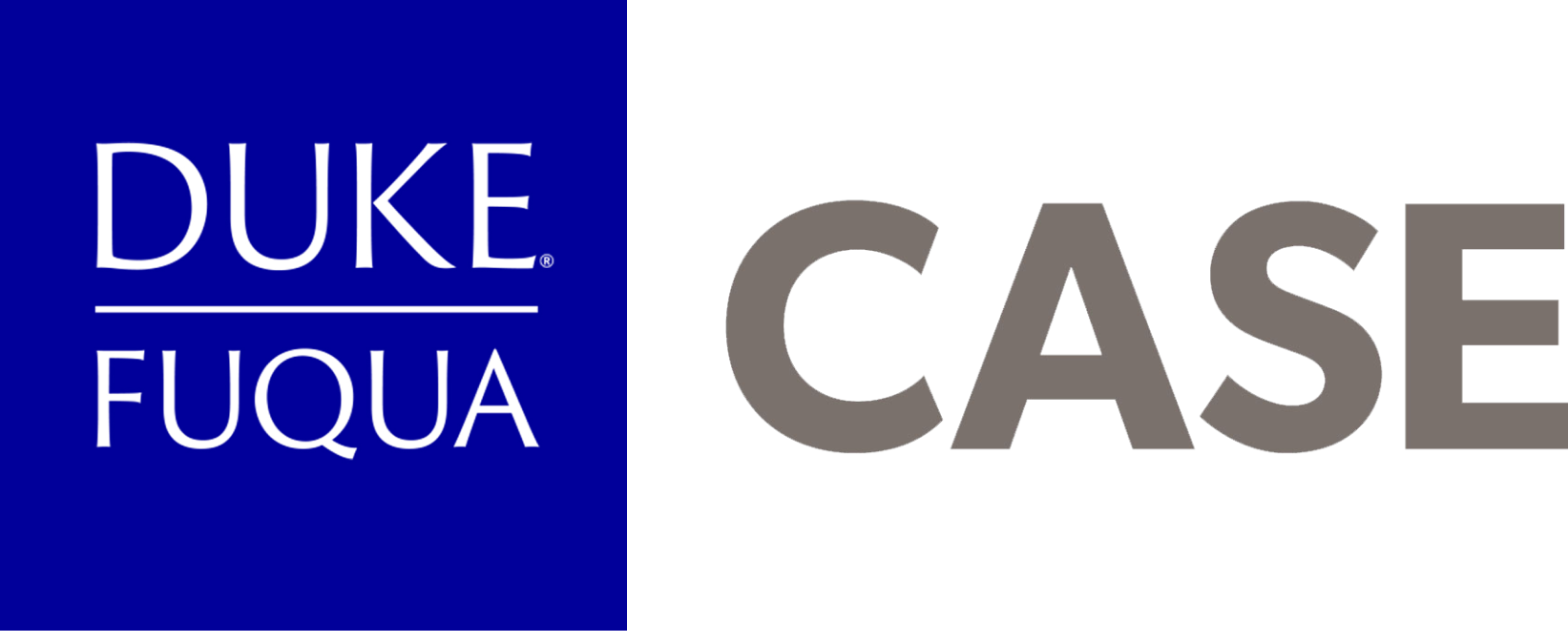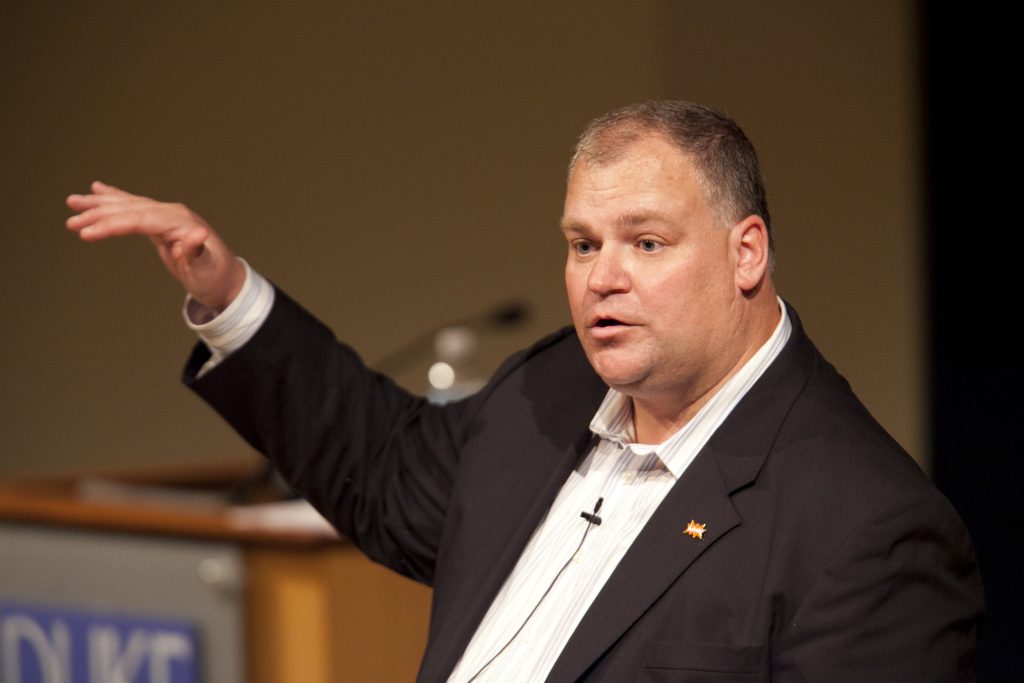This post was written in October 2011 by MBA student and CASE Fellow Beth Bafford. Beth reflects on a recent visit from Darell Hammond, CEO & Founder of KaBOOM!, recipient of the 2011 U.S. Social Entrepreneur of the Year award from the Schwab Foundation, and author of the NY Times Bestseller, “KaBOOM!: How One Man Built a Movement to Save Play“.
One of the great perks of being a CASE Fellow is gaining access to incredible individuals who come to Duke to talk about how they are changing the world. Recently, I was honored to host one such “world-changer,” Darell Hammond, the Founder and CEO of KaBOOM!.
Darell, on stage in front of a captivated audience in Geneen, told us about his story, his motivations, and his organization – KaBOOM! – that he has built over the last 15 years. He shared anecdotes about how KaBOOM!, which empowers communities to build playgrounds that facilitate outside activity, has shifted the mindset of kids, parents, community leaders, and public officials to think more seriously and strategically about the role and importance of “play” in a child’s development.
But the most fascinating aspect of Darell’s speech for me was his continual pursuit of deeper impact in the face of incredible growth. KaBOOM! has grown exponentially over the past few years and has built over 2,000 playgrounds over the organization’s lifetime. Because of the organizing power of the internet, only one in ten KaBOOM! playgrounds built today are actually managed by KaBOOM! staff. This rate of growth would be exciting to anyone building a social enterprise, but to Darell, pure growth is not the end goal.
In analyzing the locations of KaBOOM! playgrounds, Darell realized that the growth they were experiencing was not necessarily reaching the communities with the greatest need. It seemed like playgrounds were being built almost everywhere – but when he took a closer look, he found that most were in middle to upper income communities. While the impact of “play” is income-blind, he knew that he would not be satisfied until low-income communities, which tend to have the highest obesity rates in the country, were also benefiting from his work.
His new challenge is to leverage the growth and scale of his organization to reach these communities in need – and to create the correct incentives, processes, and organizational structures to enable deeper impact.
This balance – between scaling up and maintaining mission – is something we discuss in depth in our Social Entrepreneurship classes with CASE professors Cathy Clark and Greg Dees. In our case studies, we come to understand the tensions, opportunities, and challenges that scaling a social enterprise brings, making it all the more interesting to hear about these issues from Darell, a seasoned practitioner who wrestles with them every day.
What do you think he should do? I would love to get your thoughts and ideas on how Darell – and other social entrepreneurs – can achieve this balance!
Interested to hear more? Watch Darell’s entire talk here:
http://youtu.be/qvqVZlmIdWo

